Picture |
Object
name
#NORAD |
Description |
Mission
Date |
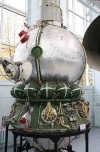
|
COSMOS
110
Voskhod 3
1966-015A
#02070 |
Cosmos 110 was a Soviet
spacecraft launched from the Baikonur cosmodrome aboard
a Voskhod rocket. It incorporated a re-entry body (capsule)
for landing scientific instruments and test objects.
It was a biological satellite that made a sustained
biomedical experiment with the dogs Veterok (Little
Wind) and Ugolyok (Little Piece of Coal) which were
observed by video transmissions and biomedical telemetry.
After 22 days in orbit around the Earth, they were safely
landed. |
Feb 22rd 1966 |
 This FSK-PDM
signal was received on 19.984 MHz by Sven Grahn. This FSK-PDM
signal was received on 19.984 MHz by Sven Grahn.
|
 This is
another recoding of Cosmos 110 also called Voskhod 3. This is
another recoding of Cosmos 110 also called Voskhod 3.
The FSK-PDM signal was received on 19.984 MHz on March
5th 1966 at 21:26 UTC by Sven
Grahn.
|
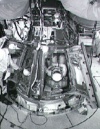
|
Gemini-8
1966-020A
#02105
(crew: Neil Armstrong and David Scott) |
 Gemini
8 was the sixth crewed Earth-orbiting spacecraft of
the Gemini series. The recording was done during the
execution of its primary mission objective: to perform
rendezvous and four docking tests with the Agena target
vehicle. Recording is part of the compilation "The
Conquest of Space" of the Astronautical Society
of Western Australia and kindly provided by Jos Heymann. Gemini
8 was the sixth crewed Earth-orbiting spacecraft of
the Gemini series. The recording was done during the
execution of its primary mission objective: to perform
rendezvous and four docking tests with the Agena target
vehicle. Recording is part of the compilation "The
Conquest of Space" of the Astronautical Society
of Western Australia and kindly provided by Jos Heymann.
|
Mar 16th
1966 |
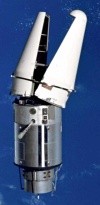
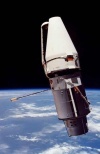
|
Gemini
9 ATDA
“Angry alligator”
1966-046A
#02186 |
 The Gemini
9 Augmented Target Docking Adapter (ATDA) was launched
from Cape Canaveral using an Atlas-Agena D rocket. The
spacecraft was successfully injected into a near-circular
304 km orbit, but telemetry signals indicated that the
launch shroud, which covered the docking adaptor, had
separated but had not been jettisoned. This was confirmed
when Gemini 9 was launched two days later and the astronauts
observed the launch shroud still on the ATDA blocking
the docking port, looking, according to Tom Stafford,
like an "angry alligator". Rendezvous within
8 meters of the ATDA was achieved by Gemini 9 on the
third revolution. The shroud had not jettisoned because
the lanyards had been installed improperly with the
loose ends taped down, due to "insufficiently detailed"
instructions. Plans to cut the fiber glass shroud loose
were considered but discarded as too dangerous to the
astronauts. The flight plan was then revised and Gemini
9 completed two different equi-period rendezvous maneuvers
with the ATDA. The ATDA was left in a 290 x 300 km orbit. The Gemini
9 Augmented Target Docking Adapter (ATDA) was launched
from Cape Canaveral using an Atlas-Agena D rocket. The
spacecraft was successfully injected into a near-circular
304 km orbit, but telemetry signals indicated that the
launch shroud, which covered the docking adaptor, had
separated but had not been jettisoned. This was confirmed
when Gemini 9 was launched two days later and the astronauts
observed the launch shroud still on the ATDA blocking
the docking port, looking, according to Tom Stafford,
like an "angry alligator". Rendezvous within
8 meters of the ATDA was achieved by Gemini 9 on the
third revolution. The shroud had not jettisoned because
the lanyards had been installed improperly with the
loose ends taped down, due to "insufficiently detailed"
instructions. Plans to cut the fiber glass shroud loose
were considered but discarded as too dangerous to the
astronauts. The flight plan was then revised and Gemini
9 completed two different equi-period rendezvous maneuvers
with the ATDA. The ATDA was left in a 290 x 300 km orbit.
The Augmented Target Docking Adapter had been prepared
as a backup target in case of an Agena Target Vehicle
failure. The ATDA was a short cylinder consisting of
a target docking adapter cone mounted on front and containing
a communications system, a guidance and control system,
and a reaction control system. It also had running lights,
but unlike the Gemini Agena Target Vehicles, the ATDA
was not stabilized.
The Gemini program was designed
as a bridge between the Mercury and Apollo programs,
primarily to test equipment and mission procedures in
Earth orbit and to train astronauts and ground crews
for future Apollo missions. The general objectives of
the program included: long duration flights in excess
of the requirements of a lunar landing mission; rendezvous
and docking of two vehicles in Earth orbit; the development
of operational proficiency of both flight and ground
crews; the conduct of experiments in space; extravehicular
operations; active control of reentry flight path to
achieve a precise landing point; and onboard orbital
navigation. Each Gemini mission carried two astronauts
into Earth orbit for periods ranging from 5 hours to
14 days. The program consisted of 10 crewed launches,
2 unmanned launches, and 7 target vehicles, at a total
cost of approximately 1,280 million dollars.
Gemini-9
ATDA telemetry recorded on 215-260 MHz in the 60's by
R.S. (Dick) Flagg at the University of Florida Student
Satellite Tracking Station.
This recording was kindly
provided by Sven Grahn with permission of R.S. (Dick)
Flagg.
|
June 1st
1966 |
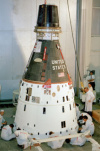
|
Gemini-9
1966-047A
#02191
(crew: Tom Stafford, Eugene Cernan) |
 This
US mission faced some problems but nevertheless with
a duration of more than 2 hours a new record for an
EVA was established. Gemini-9 also tried to dock with
ATDA, a test satellite. It returned to Earth on June
6th. Audio received on June
3rd 1966 by Dick Flagg (currently
AH6NM) on 296.8 MHz at the University of Florida Student
Satellite Tracking Station. Recording provided by Sven
Grahn. This
US mission faced some problems but nevertheless with
a duration of more than 2 hours a new record for an
EVA was established. Gemini-9 also tried to dock with
ATDA, a test satellite. It returned to Earth on June
6th. Audio received on June
3rd 1966 by Dick Flagg (currently
AH6NM) on 296.8 MHz at the University of Florida Student
Satellite Tracking Station. Recording provided by Sven
Grahn.
|
June 3rd
1966 |


|
Apollo 1
AS-204
(crew:
Virgil Grissom, Edward White, Roger
Chaffee) |
Apollo 1 (initially
designated AS-204) was the first manned mission of the
U.S. Apollo manned lunar landing program. The planned
low Earth orbital test of the Apollo Command/Service
Module never made its target launch date of February
21st 1967,
because a cabin fire during a launch rehearsal test
on January 27th 1967
at Cape Canaveral Air Force Station Launch Complex 34
killed all three crew members—Command Pilot Virgil I.
"Gus" Grissom, Senior Pilot Edward H. White
II, and Pilot Roger B. Chaffee. The name Apollo 1, chosen
by the crew, was officially retired by NASA in commemoration
of
 Enclosed recording
of German broadcast news of January 28th 1967
were recorded and kindly provided by Rolf DK2ZF. Enclosed recording
of German broadcast news of January 28th 1967
were recorded and kindly provided by Rolf DK2ZF. |
January 27th 1967 |
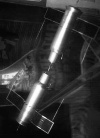
|
COSMOS
186
1967-105A
#03014 |
 Cosmos
186 incorporated a re-entry capsule for landing scientific
instruments and test objects. Automatic mating of satellites
in orbit was accomplished by Cosmos 186 and Cosmos 188
on October 30th 1967. As a
test flight for a later manned spacecraft mutual search,
approach, mooring, and docking of 2 satellites were
automatically performed. After 3.5 hr of joint flight,
the satellites parted on a command sent from the earth
and continued to orbit separately. Finally on October
31st 1976, Cosmos 186 made
a soft landing in a predetermined region of the USSR. Cosmos
186 incorporated a re-entry capsule for landing scientific
instruments and test objects. Automatic mating of satellites
in orbit was accomplished by Cosmos 186 and Cosmos 188
on October 30th 1967. As a
test flight for a later manned spacecraft mutual search,
approach, mooring, and docking of 2 satellites were
automatically performed. After 3.5 hr of joint flight,
the satellites parted on a command sent from the earth
and continued to orbit separately. Finally on October
31st 1976, Cosmos 186 made
a soft landing in a predetermined region of the USSR.
The CW-PDM signal was received on 20.008 MHz on October
30th 1967 by Sven Grahn. The
transmitter was commanded off at 14:20 UTC .
|
Oct 27th
1967 |
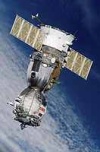

|
COSMOS
212
1968-029A
#03183 |
Cosmos 212 was one of
a series of Soviet earth satellites whose purpose was
to study outer space, the upper layers of the atmosphere,
and the earth. It was based on a Soyuz 7K OK structure.
Scientific data and measurements were relayed to earth
by multichannel telemetry systems equipped with space-borne
memory units. As a test flight for later manned spacecrafts,
Cosmos 212 and Cosmos 213 automatically docked in orbit
on April 15th 1968. Both satellites
landed on Soviet territory. |
April 14th 1968 |
 The CW-PDM
signal received on 20.008 MHz on April 14th
1968 by Sven Grahn. The transmitter was commanded off
at 17:44:02 UTC. The CW-PDM
signal received on 20.008 MHz on April 14th
1968 by Sven Grahn. The transmitter was commanded off
at 17:44:02 UTC.
|
 This is
another recording of Cosmos 212 . The CW-PDM signal
was received on 20.008 MHz on April 15th
1968 by Sven Grahn. The transmitter was commanded off
at 14:10:49 UTC. This is
another recording of Cosmos 212 . The CW-PDM signal
was received on 20.008 MHz on April 15th
1968 by Sven Grahn. The transmitter was commanded off
at 14:10:49 UTC.
|
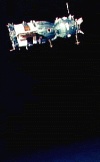
|
Soyuz-3
1968-094A
#03516
(crew: Georgiy Timofeyevich Beregovoy) |
Soyuz 3 had a command
module (recoverable portion of the ship) and a work
compartment separated by an air lock. It was piloted
by cosmonaut Lieutenant-Colonel Georgiy Timofeyevich
Beregovoy. Soyuz 3 went into a co-orbit with Soyuz 2,
performed a radio search for it, and accomplished an
automatic approach to it until they were 200 m apart.
Repeated manual approaches toward Soyuz 2 were made,
reducing the difference in velocity between the two
afts to less than 1 mph. However, actual docking was
not accomplished. Television coverage of the operations
was provided by external cameras. Soyuz 2 landed and
Soyuz 3 continued its flight. During the flight, different
modes of orientation were tested, regular TV reports
were made from orbit, and scientific and technological
experiments were performed. Finally Soyuz 3 made a soft
landing in a predetermined area of the U.S.S.R. |
Octc 26th 1968 |
 Enclosed
telemetry signal was received on October 29th
1968 by Sven Grahn. Enclosed
telemetry signal was received on October 29th
1968 by Sven Grahn.
|
 Enclosed
CW-PDM telemetry signal was received on 20.008 MHz on
October 29th 1968 by Sven Grahn.
The reception ends when the transmitter was commanded-off
at 18:14:26 UTC. Enclosed
CW-PDM telemetry signal was received on 20.008 MHz on
October 29th 1968 by Sven Grahn.
The reception ends when the transmitter was commanded-off
at 18:14:26 UTC.
|
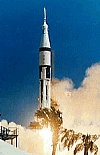
|
Apollo
7
1968-089A
#03486
(crew: Walter Schirra, Jr, Donn Eisele, Walter
Cunningham) |
 Apollo
7 was the first crewed flight of the Apollo spacecraft.
The primary objectives of the Earth orbiting mission
were to demonstrate Command and Service Module (CSM),
crew, launch vehicle, and mission support facilities
performance and to demonstrate CSM rendezvous capability.
The recording contains comments from Mission Control
on pictures sent from Apollo-7. The recording was done
during a spacewalk of Astronaut Schweickart. Recording
is part of the compilation "The Conquest of Space"
of the Astronautical Society of Western Australia and
kindly provided by Jos Heymann. Apollo
7 was the first crewed flight of the Apollo spacecraft.
The primary objectives of the Earth orbiting mission
were to demonstrate Command and Service Module (CSM),
crew, launch vehicle, and mission support facilities
performance and to demonstrate CSM rendezvous capability.
The recording contains comments from Mission Control
on pictures sent from Apollo-7. The recording was done
during a spacewalk of Astronaut Schweickart. Recording
is part of the compilation "The Conquest of Space"
of the Astronautical Society of Western Australia and
kindly provided by Jos Heymann.
|
Oct 11th 1968 |
 Enclosed
shortwave broadcast transmission of the launch of Apollo
7 by Voice of America (VOA) was recorded on Oct 11th
1968 by Ian Holder. It was kindly provided by Thomas
K4SWL from "The Shortwave Radio Audio Archive". Enclosed
shortwave broadcast transmission of the launch of Apollo
7 by Voice of America (VOA) was recorded on Oct 11th
1968 by Ian Holder. It was kindly provided by Thomas
K4SWL from "The Shortwave Radio Audio Archive".
|


|
Apollo
8
CSM-103
1968-118A
#03626
(crew: William Anders, James Lovell, Frank Borman) |
 Apollo
8 was the first manned mission to fly and orbit the
Moon. Originally it wasn't going to the Moon but was
supposed to have a low-earth orbit to test the Lunar
Module and Command Module. However, since the Lunar
Module wasn't ready, NASA decided to change the mission
objectives and send Apollo 8 to orbit the Moon 10 times.
The crew William Anders, James Lovell and Frank Borman
was retrained in record time for a completely new mission.
They were the first three humans to see the dark side
of the Moon and their voyage was the first ever to escape
Earth's gravitational force and visit another celestial
body. On Christmas Eve 1968, when approaching
lunar sunrise, the 3 crew members sent a famous broadcast
message back to Earth when taking turns reading the
first 10 verses from the book of Genesis. Audio courtesy
of NASA (3MB). Apollo
8 was the first manned mission to fly and orbit the
Moon. Originally it wasn't going to the Moon but was
supposed to have a low-earth orbit to test the Lunar
Module and Command Module. However, since the Lunar
Module wasn't ready, NASA decided to change the mission
objectives and send Apollo 8 to orbit the Moon 10 times.
The crew William Anders, James Lovell and Frank Borman
was retrained in record time for a completely new mission.
They were the first three humans to see the dark side
of the Moon and their voyage was the first ever to escape
Earth's gravitational force and visit another celestial
body. On Christmas Eve 1968, when approaching
lunar sunrise, the 3 crew members sent a famous broadcast
message back to Earth when taking turns reading the
first 10 verses from the book of Genesis. Audio courtesy
of NASA (3MB).
|
Dec 21st 1968 |
Each
of the Apollo Command Modules carried an onboard tape
recorder called the DSE (Data Storage Equipment). It
was a closed tape machine which recorded engineering
data as well as onboard voice – especially when the
spacecraft was behind the Moon, and out of contact with
the Earth. The tape was periodically “dumped" (replayed
at high speed) to the tracking stations. During the
mission, someone at Honeysuckle Creek took copies of
segments of onboard audio to make a highlights tape,
covering
 LOS at
Lunar Encounter, LOS at
Lunar Encounter,
 preparation
for LOI-1 (Lunar Orbit Insertion) burn preparation
for LOI-1 (Lunar Orbit Insertion) burn
 the LOI-1
burn, the LOI-1
burn,
 end of
successful LOI burn, end of
successful LOI burn,
 AOS (Acquisition
of Signal) at Honeysuckel Creek (1st
orbit), AOS (Acquisition
of Signal) at Honeysuckel Creek (1st
orbit),
 preparations
for TEI burn to leave lunar orbit preparations
for TEI burn to leave lunar orbit
 start
of TEI (Trans Earth Injection) burn start
of TEI (Trans Earth Injection) burn
 end of
TEI burn "we're going home". end of
TEI burn "we're going home".
All recordings
kindly provided by Colin Mackellar. |
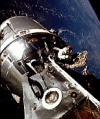
|
Apollo 9
1969-018A
#03769
(crew: James McDivitt, David Scott, Russell Schweickart
) |
 Apollo
9 was the third crewed Apollo flight and the first crewed
flight to include the Lunar Module (LM). The primary
objective of the mission was to test all aspects of
the Lunar Module in Earth orbit, including operation
of the LM as an independent self-sufficient spacecraft
and performance of docking and rendezvous maneuvers.
The recording was done during a spacewalk of Astronaut
Schweickart. Recording is part of the compilation "The
Conquest of Space" of the Astronautical Society
of Western Australia and kindly provided by Jos Heymann. Apollo
9 was the third crewed Apollo flight and the first crewed
flight to include the Lunar Module (LM). The primary
objective of the mission was to test all aspects of
the Lunar Module in Earth orbit, including operation
of the LM as an independent self-sufficient spacecraft
and performance of docking and rendezvous maneuvers.
The recording was done during a spacewalk of Astronaut
Schweickart. Recording is part of the compilation "The
Conquest of Space" of the Astronautical Society
of Western Australia and kindly provided by Jos Heymann.
|
Mar 3rd
1969 |
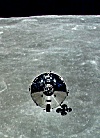
|
Apollo 10
1969-043A
#03941
(crew: Thomas P. Stafford, John W. Young, Eugene
A. Cernan) |
 Apollo
10 was the second Apollo mission to orbit the Moon,
and the first to travel to the Moon with the full Apollo
spacecraft, consisting of the Command and Service Module
(CSM-106, "Charlie Brown") and the Lunar Module
(LM-4, "Snoopy"). The recording includes in
orbit comments of Astronaut Cernan. Recording is part
of the compilation "The Conquest of Space"
of the Astronautical Society of Western Australia and
kindly provided by Jos Heymann. Apollo
10 was the second Apollo mission to orbit the Moon,
and the first to travel to the Moon with the full Apollo
spacecraft, consisting of the Command and Service Module
(CSM-106, "Charlie Brown") and the Lunar Module
(LM-4, "Snoopy"). The recording includes in
orbit comments of Astronaut Cernan. Recording is part
of the compilation "The Conquest of Space"
of the Astronautical Society of Western Australia and
kindly provided by Jos Heymann.
|
May 18th
1969 |

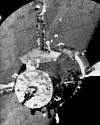
|
Soyuz-4
1968-004A
#03654
(crew: Vladimir A. Shatalov) |
 Soyuz
4, piloted by cosmonaut Lieutenant-Colonel Vladimir
A. Shatalov, was the first manned spacecraft to be launched
by the U.S.S.R. during the winter and had an enhanced
water-landing capability. On January 16th,
during its 34th orbit, Soyuz
4 began a docking exercise with Soyuz 5, which was on
its 18th orbit. When the automatic
system had brought the ships within 99 m of one another,
a manual approach of Soyuz 4 was completed. While docked,
the ships completely interlocked controls, power, and
telephones. On the 51st orbit
of Soyuz 4, cosmonauts Ye. V. Khrunov and A. S. Yeliseyev
of Soyuz 5 passed into the orbital work compartment
of their ship, donned pressure suits, opened the outer
hatch, and floated and climbed hand over hand using
handrails from Soyuz 5 through the opened hatch and
into Soyuz 4. TV cameras recorded coverage of the whole
procedure, both inside and outside the ships. The two
ships remained docked for 4 hr and 35 min and were hailed
in Soviet announcements as the world's first space station.
Soyuz 4 returned to earth after 3 days, carrying a crew
of three men instead of one. Soyuz
4, piloted by cosmonaut Lieutenant-Colonel Vladimir
A. Shatalov, was the first manned spacecraft to be launched
by the U.S.S.R. during the winter and had an enhanced
water-landing capability. On January 16th,
during its 34th orbit, Soyuz
4 began a docking exercise with Soyuz 5, which was on
its 18th orbit. When the automatic
system had brought the ships within 99 m of one another,
a manual approach of Soyuz 4 was completed. While docked,
the ships completely interlocked controls, power, and
telephones. On the 51st orbit
of Soyuz 4, cosmonauts Ye. V. Khrunov and A. S. Yeliseyev
of Soyuz 5 passed into the orbital work compartment
of their ship, donned pressure suits, opened the outer
hatch, and floated and climbed hand over hand using
handrails from Soyuz 5 through the opened hatch and
into Soyuz 4. TV cameras recorded coverage of the whole
procedure, both inside and outside the ships. The two
ships remained docked for 4 hr and 35 min and were hailed
in Soviet announcements as the world's first space station.
Soyuz 4 returned to earth after 3 days, carrying a crew
of three men instead of one.
The CW-PDM telemetry
signal including biomed subcommutation was received
on 20.008 MHz on January 16th
1969 at about 16:00 UTC by Sven Grahn.
|
Jan 14th
1969 |



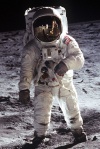
|
Apollo
11
Command & Service Module
CSM-107
1969-059A
#04039
Lunar Module
LM/EASEP
1969-059C
#04041
(crew: Neil. A. Armstrong, Edwin E. Aldrin, Michael
Collins) |
Apollo 11 was the first
manned mission to land on the moon. The LM (landing
module) spacecraft transmitted at S-band with a carrier
frequency of 2282.5 MHz both live television (FM modulated)
as well as telemetry (on PM modulated sub-carriers).
This communication system was collectively referred
to as the Unified S-Band Communication System.  Alan
Bean, who travelled to the moon aboard Apollo 12 and
was the 4th man on the moon,
painted pictures of Neil Armstrong and Buzz Aldrin.
Reprints are still available. You can find a picture
if you click on the icon to the right. Alan
Bean, who travelled to the moon aboard Apollo 12 and
was the 4th man on the moon,
painted pictures of Neil Armstrong and Buzz Aldrin.
Reprints are still available. You can find a picture
if you click on the icon to the right. |
Jul
16th
1969 |
 The audio
file enclosed documents the successful launch sequence.
Recorded on July 16th 1969. The audio
file enclosed documents the successful launch sequence.
Recorded on July 16th 1969.
|
 The famous
words of Neil Armstrong, the first man on the Moon,
when he stepped on the moon. Recorded on July 20th
1969. The famous
words of Neil Armstrong, the first man on the Moon,
when he stepped on the moon. Recorded on July 20th
1969.
|
 The
second man to step on the moon was Edwin E. (Buzz) Aldrin.
This video shows him climbing down the ladder. This
video was received by Parkes Observatory in Australia.
Video courtesy of NASA. The
second man to step on the moon was Edwin E. (Buzz) Aldrin.
This video shows him climbing down the ladder. This
video was received by Parkes Observatory in Australia.
Video courtesy of NASA.
|
 President
Nixon talks with the Astronauts and wished for "..
peace and tranquility on the Earth." This video
was received by Parkes Observatory in Australia. Video
courtesy of NASA. President
Nixon talks with the Astronauts and wished for "..
peace and tranquility on the Earth." This video
was received by Parkes Observatory in Australia. Video
courtesy of NASA.
|
 Vinyl
single "First man on the moon" side 1 includes
the speech of J.F.Kennedy announcing the plan to go
to the moon. Record provided by Maik Hermenau. Vinyl
single "First man on the moon" side 1 includes
the speech of J.F.Kennedy announcing the plan to go
to the moon. Record provided by Maik Hermenau.
|
 Vinyl
single "First man on the moon" side 2 includes
the launch of Apollo 11 and landing of Eagle. Record
provided by Maik Hermenau. Vinyl
single "First man on the moon" side 2 includes
the launch of Apollo 11 and landing of Eagle. Record
provided by Maik Hermenau.
|
 Part
1 of a report in German language about the first manned
mission to the moon, Vinyl LP "Original Dokumente
vom Weg zum Mond" war 1970 eine Beilageder Zeitschrift
"Bunte Illustrierte". Record provided by Maik
Hermenau (11 minutes). Part
1 of a report in German language about the first manned
mission to the moon, Vinyl LP "Original Dokumente
vom Weg zum Mond" war 1970 eine Beilageder Zeitschrift
"Bunte Illustrierte". Record provided by Maik
Hermenau (11 minutes).
|
 Part
2 of a report in German language about the first manned
mission to the moon, Vinyl LP "Original Dokumente
vom Weg zum Mond" war 1970 eine Beilageder Zeitschrift
"Bunte Illustrierte". Record provided by Maik
Hermenau (15 minutes). Part
2 of a report in German language about the first manned
mission to the moon, Vinyl LP "Original Dokumente
vom Weg zum Mond" war 1970 eine Beilageder Zeitschrift
"Bunte Illustrierte". Record provided by Maik
Hermenau (15 minutes).
|
 On July
21th 1969 03:51 UTC Larry Bassinger,
a ham radio amateur with the callsign W4EJA living in
Louisville, Kentucky, USA made a remarkable accomplishment: On July
21th 1969 03:51 UTC Larry Bassinger,
a ham radio amateur with the callsign W4EJA living in
Louisville, Kentucky, USA made a remarkable accomplishment:

He was able
to receive the VHF radio transmission from astronauts
Armstrong and Aldrin directly while they were walking
on the moon. Larry used modified surplus radio equipment
and a home-brew corner reflector antenna built with
chicken wire. He received the 259.7 MHz AM transmitter
in the backpack of Armstrong which he used to communicate
with the Lunar Module. In enclosed recording one can
hear the voice of Armstrong and also that of Aldrin
because the backpack of Armstrong received also the
voice of Aldrin on 279.0 MHz in FM and retransmitted
it also to the LM. Recording kindly provided by Larry
Baysinger.
|



|
Apollo
12
(crew: Charles "Pete" Conrad,
Richard "Dick" F. Gordon, Alan L. "Al"
Bean)
CSM-108
1969-099A
#04225 |
 This was
the 2nd mission of Apollo with
a landing on the moon. The rocket was struck twice (36
seconds and 52 seconds after launch) by a lightning.
You can hear the launch campaign including the conversation
about the lightning strikes in the first audio recording. This was
the 2nd mission of Apollo with
a landing on the moon. The rocket was struck twice (36
seconds and 52 seconds after launch) by a lightning.
You can hear the launch campaign including the conversation
about the lightning strikes in the first audio recording.
 The second
audio files documents communication between LM (the
lunar module with the nickname "Intrepid")
and Houston ground control during the final descent
phase (last 3 minutes) and the touch down on the moon
(110 h, 32 min and 36 sec mission elapsed time). The second
audio files documents communication between LM (the
lunar module with the nickname "Intrepid")
and Houston ground control during the final descent
phase (last 3 minutes) and the touch down on the moon
(110 h, 32 min and 36 sec mission elapsed time).
The crew returned safely on November 24th
1969.
I extracted the recordings from the NASA audio
collection.
 Alan
L. Bean was the 4th man on
the moon. After he left NASA he became an artist and
started painting beautiful scenes of the moon. Enclosed
a picture of himself which he named "A New Frontier". Alan
L. Bean was the 4th man on
the moon. After he left NASA he became an artist and
started painting beautiful scenes of the moon. Enclosed
a picture of himself which he named "A New Frontier".
|
Nov 14th 1969 |


|
Apollo
13
aborted third manned mission to the moon
(crew: James A. Lovell, Jr., John L. Swigert, Jr., Fred
W. Haise, Jr. )
CSM-109
1970-029A
#04371 |
This aborted
3rd manned mission to moon
 ended
almost fatal. Due to an explosion of the oxygen tank
in the service module the mission had to be aborted
and luckily the crew returned safely on April 17th
1970. See here a short movie of the damaged service
module when clicking on the picture to the right. ended
almost fatal. Due to an explosion of the oxygen tank
in the service module the mission had to be aborted
and luckily the crew returned safely on April 17th
1970. See here a short movie of the damaged service
module when clicking on the picture to the right. |
Apr
11th 1970 |
  First
recording includes the famous words of J. Swigert after
the explosion of the tank: "Houston, we've had
a problem here." The second recording is the report
of the crew of the damage of the service module. Recordings
are part of the compilation "The Conquest of Space"
of the Astronautical Society of Western Australia and
kindly provided by Jos Heymann. First
recording includes the famous words of J. Swigert after
the explosion of the tank: "Houston, we've had
a problem here." The second recording is the report
of the crew of the damage of the service module. Recordings
are part of the compilation "The Conquest of Space"
of the Astronautical Society of Western Australia and
kindly provided by Jos Heymann.
|
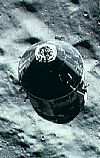
|
Apollo
16
(crew: John W. Young, Charles M. Duke, Jr.,
Thomas K. Mattingly, II)
CSM-113
1972-031A
CASPER
#06000 |
Apollo 16 was the fifth
mission in which humans walked on the lunar surface
and returned to Earth. On April 21st
1972 two astronauts (Apollo 16 Commander John W. Young
and LM pilot Charles M. Duke, Jr.) landed in the Descartes
region of the Moon in the Lunar Module (LM) while the
Command and Service Module (CSM) (with CM pilot Thomas
K. Mattingly, II) continued in lunar orbit. During their
stay on the Moon, the astronauts set up  scientific
experiments, took photographs, and collected lunar samples.
Enclosed video shows the LM (named Orion) taking off
from the Moon on April 24th.
The astronauts returned to Earth safely on April 27th.
Video clip by Colin Mackellar from JSC-supplied video. scientific
experiments, took photographs, and collected lunar samples.
Enclosed video shows the LM (named Orion) taking off
from the Moon on April 24th.
The astronauts returned to Earth safely on April 27th.
Video clip by Colin Mackellar from JSC-supplied video. |
Apr
16th 1972 |
  The first
recording was made while J.W. Young was collecting rocks
on the lunar surface while the second recording was
made while he tested the lunar rover. Recording are
part of the compilation "The Conquest of Space"
of the Astronautical Society of Western Australia and
kindly provided by Jos Heymann. The first
recording was made while J.W. Young was collecting rocks
on the lunar surface while the second recording was
made while he tested the lunar rover. Recording are
part of the compilation "The Conquest of Space"
of the Astronautical Society of Western Australia and
kindly provided by Jos Heymann.
|
 In enclosed
audio recording from Honeysuckle Creek you can heat
John Young and Charlie Duke as they descend towards
Descartes, starting at about 104:26:40 GET, until just
after landing. Recoding is from a compact cassette recording
made at Honeysuckle during Apollo 16 by Bryan Sullivan,
digitized and kindly provided by Colin Mackellar. In enclosed
audio recording from Honeysuckle Creek you can heat
John Young and Charlie Duke as they descend towards
Descartes, starting at about 104:26:40 GET, until just
after landing. Recoding is from a compact cassette recording
made at Honeysuckle during Apollo 16 by Bryan Sullivan,
digitized and kindly provided by Colin Mackellar.
|
 Before
EVA 2, comms lines from Houston to Honeysuckle are lost,
though lines from Honeysuckle to Houston (via Goddard)
are not affected. Sitting inside Orion and having their
beakfast, John Young and Charlie Duke have been discussing
with Capcom Tony England the upcoming EVA. It takes
a little while for it to become obvious that they aren’t
hearing anything back from Houston. In order to inform
the crew what is happening, Honeysuckle’s Operations
Supervisor, John Saxon, pushes his ‘Press to Talk’ Switch
to send his voice to the transmitter, becoming the only
Australian to speak with someone on the Moon. Recording
kindly provided by Colin Mackellar. Before
EVA 2, comms lines from Houston to Honeysuckle are lost,
though lines from Honeysuckle to Houston (via Goddard)
are not affected. Sitting inside Orion and having their
beakfast, John Young and Charlie Duke have been discussing
with Capcom Tony England the upcoming EVA. It takes
a little while for it to become obvious that they aren’t
hearing anything back from Houston. In order to inform
the crew what is happening, Honeysuckle’s Operations
Supervisor, John Saxon, pushes his ‘Press to Talk’ Switch
to send his voice to the transmitter, becoming the only
Australian to speak with someone on the Moon. Recording
kindly provided by Colin Mackellar.
|
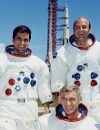
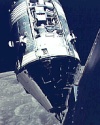

|
Apollo
17
CSM-114
1972-096A
#06300
(crew: Eugene A. Cernan, Harrison H. Schmitt, Ronald
E. Evans) |
Apollo 17 was the 6th
and last Apollo mission during which humans walked on
the lunar surface. On December 11th
1972 commander Cernan and lunar module (LM) pilot Schmitt
landed in the Taurus-Littrow region of the Moon. The
Command and Service Module (CSM) with its pilot Evans
continued in its lunar orbit. During their stay on the
Moon, the astronauts set up scientific experiments,
took photographs, drove around with the rover and collected
lunar samples. The LM took off from the Moon on December
14th and the astronauts returned
to Earth on December 19th.
|
Dec
7th 1972 |
 Enclosed
shortwave broadcast transmission of the launch of Apollo
17 by Voice of America (VOA) was recorded on Dec 7th
1972 by Ian Holder. It was kindly provided by Thomas
K4SWL from "The Shortwave Radio Audio Archive". Enclosed
shortwave broadcast transmission of the launch of Apollo
17 by Voice of America (VOA) was recorded on Dec 7th
1972 by Ian Holder. It was kindly provided by Thomas
K4SWL from "The Shortwave Radio Audio Archive".
|
 Enclosed
voice transmission of Apollo-17 while in earth orbit
was received on 296.8 MHz on December 7th
1972 at 07:08 UTC by R.S. (Dick) Flagg and Sven Grahn
in Titusville, Florida. Enclosed
voice transmission of Apollo-17 while in earth orbit
was received on 296.8 MHz on December 7th
1972 at 07:08 UTC by R.S. (Dick) Flagg and Sven Grahn
in Titusville, Florida.
This recording was kindly
provided by Sven Grahn with permission of R.S. (Dick)
Flagg.
|
 Enclosed
voice transmission of Apollo-17 while in lunar
orbit was received on 2287.5 MHz on December 12th
1972 by R.S. (Dick) Flagg and Sven Grahn in Biven's
Arm, Gainesville, Florida. Enclosed
voice transmission of Apollo-17 while in lunar
orbit was received on 2287.5 MHz on December 12th
1972 by R.S. (Dick) Flagg and Sven Grahn in Biven's
Arm, Gainesville, Florida.
This recording was kindly
provided by Sven Grahn with permission of R.S. (Dick)
Flagg.
|
 This recording
of the Apollo 17 descent and lunar landing was made
at Honeysuckle Creek and was preserved by Alan Foster.
Goldstone was tracking, and so this was recorded from
the Net 1 feed. It begins as Challenger is at 57,000
feet. Touchdown is 10'40" into the recording. The
audio quality on this recording is quite good. Ron Evans
in the orbiting Command Module is not heard on this
circuit from Goldstone, whereas the Cernan and Schmitt
– and Houston – can hear him. Digitized from the original
tapes and kindly provided by Colin Mackellar. This recording
of the Apollo 17 descent and lunar landing was made
at Honeysuckle Creek and was preserved by Alan Foster.
Goldstone was tracking, and so this was recorded from
the Net 1 feed. It begins as Challenger is at 57,000
feet. Touchdown is 10'40" into the recording. The
audio quality on this recording is quite good. Ron Evans
in the orbiting Command Module is not heard on this
circuit from Goldstone, whereas the Cernan and Schmitt
– and Houston – can hear him. Digitized from the original
tapes and kindly provided by Colin Mackellar.
|
 Enclosed
recording of the audio link between the team on the
moon while driving around with the rover and the ground
staff on Earth was recorded on December 13th
1972 around 05:00 UTC by Bob K5DZE (ex DA1EZ). It was
actually a live re-transmission on 7.524 MHz in SSB
between 2 NASA stations. You can hear in this excellent
20 minutes long recording the slow but strong fading
of the signal coming from the moon. Many thanks to Bob
K5DZE for kindly providing this interesting recording. Enclosed
recording of the audio link between the team on the
moon while driving around with the rover and the ground
staff on Earth was recorded on December 13th
1972 around 05:00 UTC by Bob K5DZE (ex DA1EZ). It was
actually a live re-transmission on 7.524 MHz in SSB
between 2 NASA stations. You can hear in this excellent
20 minutes long recording the slow but strong fading
of the signal coming from the moon. Many thanks to Bob
K5DZE for kindly providing this interesting recording.
|

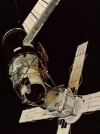
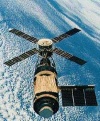
|
Skylab
1
1973-027A
#06633
Skylab Orbital Workshop (OWS) |
The
Skylab (SL) was a manned, orbiting spacecraft composed
of five parts:
the Apollo telescope mount (ATM),
the multiple docking adapter (MDA),
the airlock
module (AM),
the instrument unit (IU),
and the orbital workshop (OWS) in the form of
a cylinder.
The ATM was a solar observatory, positioned
90 deg from the longitudinal axis after insertion into
orbit and it provided attitude control and experiment
pointing for the rest of the cluster. It was attached
to the MDA and AM at one end of the OWS. The retrieval
and installation of film used in the ATM was accomplished
by astronauts during extravehicular activity (EVA).
The MDA served as a dock for the command and service
modules, which served as personnel taxis to the Skylab.
The AM provided an airlock between the MDA and the OWS,
and contained controls and instrumentation. The IU,
which was used only during launch and the initial phases
of operation, provided guidance and sequencing functions
for the initial deployment of the ATM, solar arrays,
etc. The OWS was a modified Saturn 4B stage suitable
for long duration manned habitation in orbit. It contained
provisions and crew quarters necessary to support three-person
crews for periods of up to 84 days each. The Skylab
OWS itself was launched on May 14th
1973. All parts were capable of unmanned, in-orbit storage,
reactivation, and reuse.
|
May
14th 1973 |
 Enclosed
signal was received on 230.4 MHz on May 14th
1973 at 17:55 UTC by Sven Grahn. Enclosed
signal was received on 230.4 MHz on May 14th
1973 at 17:55 UTC by Sven Grahn.
|
 Enclosed
signal was received on 237.0 MHz on June 22nd
1973 at 21:35 UTC by Sven Grahn. Enclosed
signal was received on 237.0 MHz on June 22nd
1973 at 21:35 UTC by Sven Grahn.
|
Skylab
was first manned during the period May 25th
to June 22nd 1973 by the crew
of the SL-2 mission (1973-032A) with the astronauts
Charles Conrad, Paul J. Weitz, Dr. Joseph P. Kerwin.
John Saxon recorded these intercom loops at Honeysuckle
Creek during Skylab passes and added a running commentary.
 First
recording was during orbit #3080. (4:42 Capcom Bruce
McCandless calls through Guam, 9:30 Madrid replaying
data, 10:00 Guam LOS all links, 12:45 AOS
at Honeysuckle, 13:56 Capcom Bruce McCandless
calls through Honeysuckle, 21:22 LOS, all links,
24:30 HSK begins to play back data, 27:10 John
accidentally broadcasts his commentary on Alpha, 30:10
Vanguard (Tracking ship)). First
recording was during orbit #3080. (4:42 Capcom Bruce
McCandless calls through Guam, 9:30 Madrid replaying
data, 10:00 Guam LOS all links, 12:45 AOS
at Honeysuckle, 13:56 Capcom Bruce McCandless
calls through Honeysuckle, 21:22 LOS, all links,
24:30 HSK begins to play back data, 27:10 John
accidentally broadcasts his commentary on Alpha, 30:10
Vanguard (Tracking ship)).
 Second
recording was during orbit #3081. Second
recording was during orbit #3081.
Recordings kindly
provided by Colin Mackellar. |
Next,
it was manned during the period July 28th
to September 25th 1973 by the
crew of the SL-3 mission (1973-050A) with the astronauts
Alan L. Bean, Dr. Owen K. Garriott, Jack R. Lousma.
|
The
3rd and final manned period
was from November 16th 1973
to February 8th 1974, when
it was manned by the crew from the SL-4 mission (1973-090A)
with the astronauts Gerald P. Carr, Dr. Edward G. Gibson,
William R. Pogue. |

|
Soyuz
14
1974-051A
#07361
(crew: Pavel Popovich, Yury Artukh |
 Soyuz
14 was a manned Soviet mission launched from the Baikonur
cosmodrome with cosmonauts Pavel Popovich and Yury Artukhin
aboard. It docked with the Salyut 3 space station for
15 days, 17 hours. Soyuz
14 was a manned Soviet mission launched from the Baikonur
cosmodrome with cosmonauts Pavel Popovich and Yury Artukhin
aboard. It docked with the Salyut 3 space station for
15 days, 17 hours.
Enclosed voice transmission of
Pavel Popovich calling "Zarya ya Berkut" was
received on 121.75 MHz on July 3rd
1974 by Sven Grahn.
|
July 3rd
1974 |
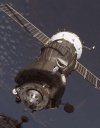
|
Soyuz
16
1974-096A
#07561
(crew: Filipchenko, Rukavishnikov) |
 Soyuz
16 was a manned Soviet mission launched from the Baikonur
cosmodrome with cosmonauts Filipchenko and Rukavishnikov
aboard. It performed tests of the modernized onboard
systems in preparation of the 1975 joint Apollo-Soyuz
Test Program (ASTP) and returned on December 8th
1974. Soyuz
16 was a manned Soviet mission launched from the Baikonur
cosmodrome with cosmonauts Filipchenko and Rukavishnikov
aboard. It performed tests of the modernized onboard
systems in preparation of the 1975 joint Apollo-Soyuz
Test Program (ASTP) and returned on December 8th
1974.
Enclosed voice transmission from Filipchenko
calling "Ya Buran ..." was received on 121.750
MHz on December 5th 1974 at
13:35 UTC by Sven Grahn.
|
Dec 2nd
1974 |


|
Salyut
4
Salyut-4
Salute 4
DOS 4
1974-104A
#07591 |
 The Salyut
4 space station was the second successful Zarya station
and launched on December 26th
1974 in an orbit with an apogee of 355 km and a perigee
of 343 km. The orbital period was 101.3 minutes. It
was at an inclination of 51.6 degrees. The main experiments
on Salyut 4 were an X-ray instrument, often called the
Filin telescope, and optical sensors. Salyut 4 hosted
two crews (missions Soyuz 17 and Soyuz 18) for 30 days
and 63 days respectively. It reentered the Earth's atmosphere
on February 2nd 1977. The Salyut
4 space station was the second successful Zarya station
and launched on December 26th
1974 in an orbit with an apogee of 355 km and a perigee
of 343 km. The orbital period was 101.3 minutes. It
was at an inclination of 51.6 degrees. The main experiments
on Salyut 4 were an X-ray instrument, often called the
Filin telescope, and optical sensors. Salyut 4 hosted
two crews (missions Soyuz 17 and Soyuz 18) for 30 days
and 63 days respectively. It reentered the Earth's atmosphere
on February 2nd 1977.
Enclosed
CW-PDM signal was received on 20.008 MHz on November
21st 1976 by Sven Grahn.
|
Dec 26th
1974 |

|
Soyuz
17
1975-001A
#07604
(crew: Grechko, Gubarev) |
 Soyuz
17 was a manned Soviet mission launched from the Baikonur
Cosmodrome and docked with the Salyut 4 space station.
The flight crew consisted of Cosmonauts Grechko and
Gubarev. It returned to Earth almost 30 days later and
landed 110 km NE of Tselinograd on February 9th
1975 at 11:03 UTC. Soyuz
17 was a manned Soviet mission launched from the Baikonur
Cosmodrome and docked with the Salyut 4 space station.
The flight crew consisted of Cosmonauts Grechko and
Gubarev. It returned to Earth almost 30 days later and
landed 110 km NE of Tselinograd on February 9th
1975 at 11:03 UTC.
While Soyuz 17 was in final approach
to dock with Salyut 4 enclosed voice signal was received
on 121.75 MHz on January 11th
1975 by Sven Grahn.
|
Jan 11th
1975 |

|
ASTP-Apollo
1975-066A
#08032
(crew: R. Thomas Giuli, Chester M. Lee) |
The United States and
the U.S.S.R. launched an Apollo spacecraft and a Soyuz
spacecraft, respectively, as a joint effort called the
Apollo-Soyuz Test Project (ASTP). The Soyuz spacecraft
was launched first, with a two-man crew who maneuvered
their spacecraft into a docking orbit. The Apollo spacecraft
was launched 7.5h later, with a three-man crew who placed
their spacecraft into a proper configuration for docking
with the Soyuz spacecraft. The docking of the two spacecraft
occurred on July 17th 1975.
After docking the crew members rotated
between the two spacecraft and conducted various mainly
ceremonial activities and TV reports.
After being docked for nearly 44
hours, Apollo and Soyuz parted for the first time and
were station-keeping at a range of 50 meters. The Apollo
crew placed its craft between Soyuz and the sun so that
the diameter of the service module formed a disk which
blocked out the sun. After this experiment Apollo moved
towards Soyuz for the second docking.
Three hours later Apollo and Soyuz
undocked for the second and final time. The spacecraft
moved to a 40 m station-keeping distance so that an
ultraviolet absorption experiment could be performed.
With all the joint flight activities completed, the
ships went on their separate ways. |
Jul
15th 1975 |
 Recording
is part of the compilation "The Conquest of Space"
of the Astronautical Society of Western Australia and
kindly provided by Jos Heymann. Recording
is part of the compilation "The Conquest of Space"
of the Astronautical Society of Western Australia and
kindly provided by Jos Heymann.
|
Picture |
Object
name
#NORAD |
Description |
Mission
Date |